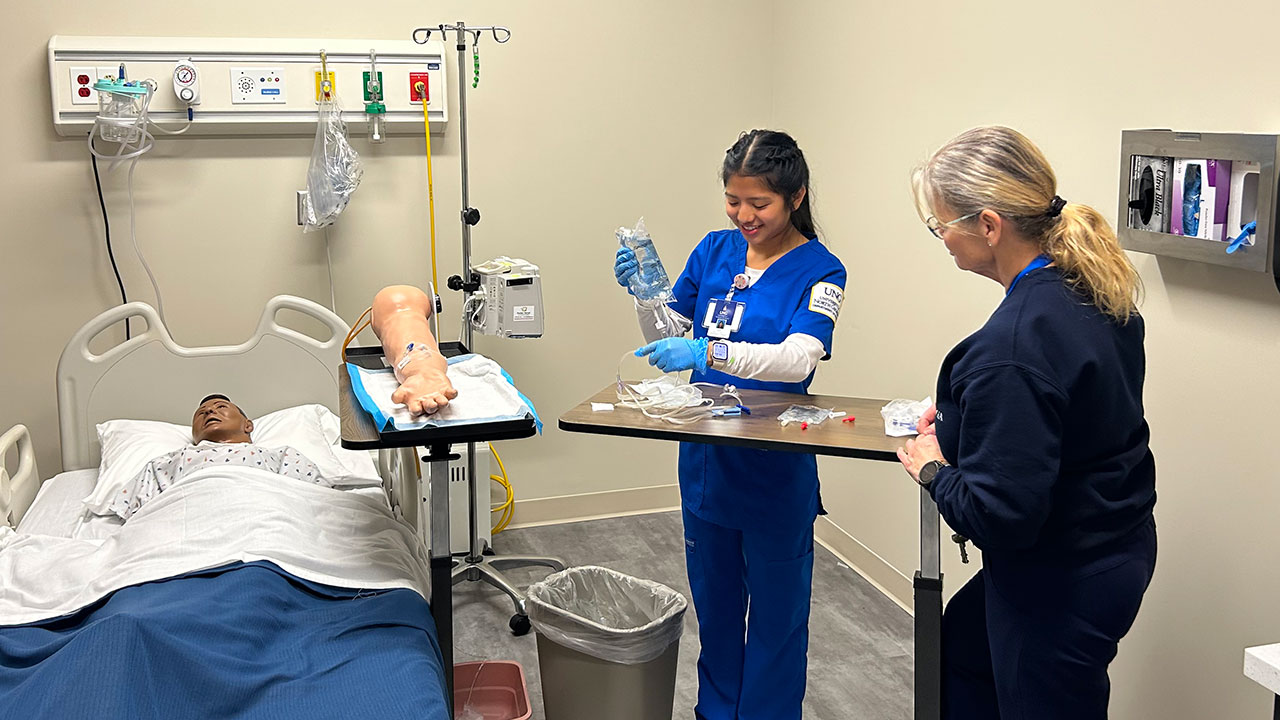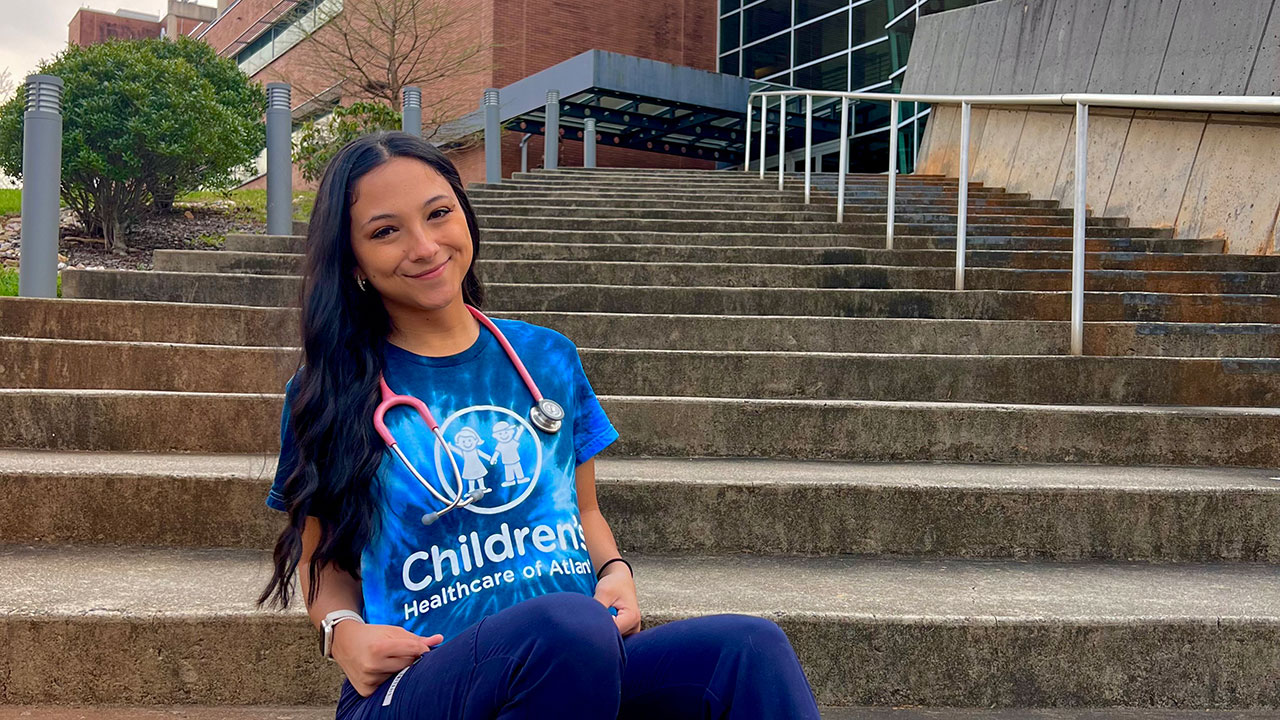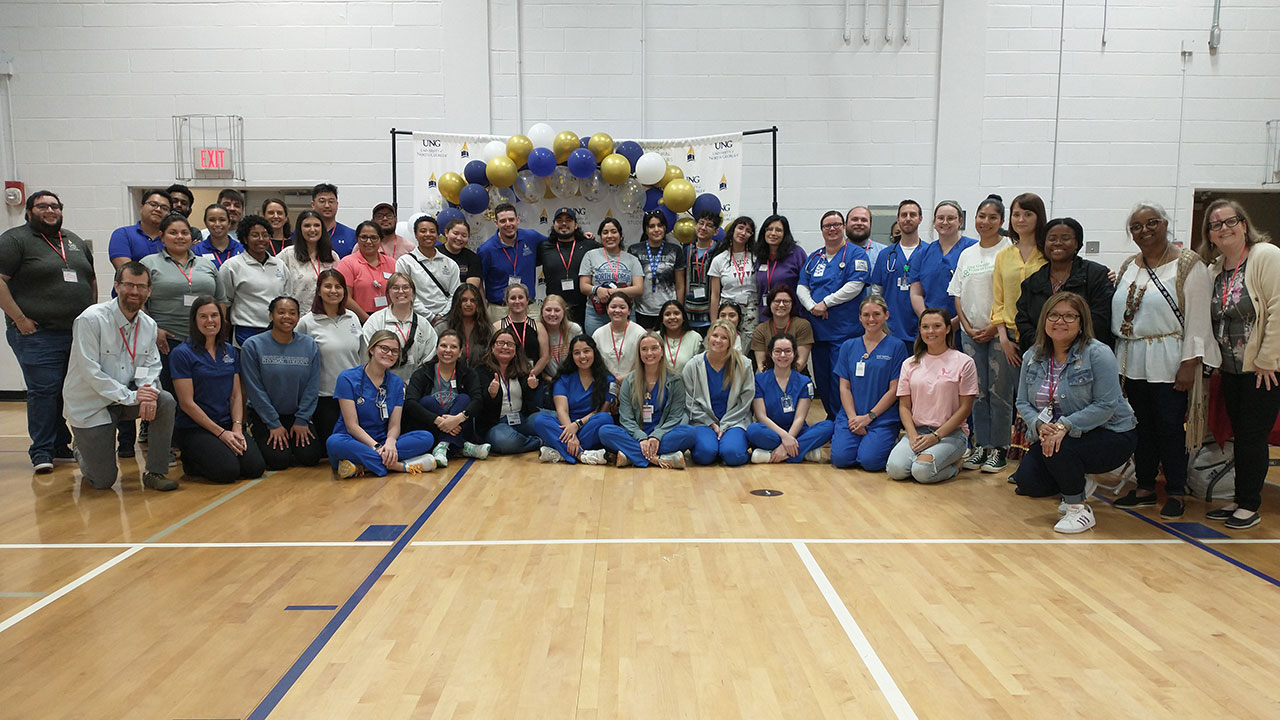Physical therapists' research aims to limit pain for guide dog users

Article By: Clark Leonard
The University of North Georgia (UNG) is breaking new ground in its study of guide dogs, the visually impaired people who use them and their harness devices.
Among the major findings is that guide dog use sharply reduces the risk of falls for visually impaired people, a result which College of Health Sciences and Professions Dean Dr. Teresa Conner-Kerr said UNG is the first to uncover. But an increase in joint pain complaints is also noted in these individuals after switching from other mobility aids to a guide dog, according to the research.
A simple observation by Conner-Kerr at a wound clinic has led to a flurry of research that could revolutionize the way physical therapists work with patients who have guide dogs.
Working at the clinic before she came to UNG, Conner-Kerr noticed a difference in the posture of patients who had guide dogs and wanted to discover the reason for this difference.
Conner-Kerr connected with Dr. Sue Ann Kalish, associate professor of physical therapy, in 2016 to launch research into the relationship of guide dog users, the dogs and the harnesses connecting them. Dr. Robert Powers, associate professor of physical therapy and nursing, and director of research for the College of Health Sciences & Professions, later joined in the work.
These faculty members' efforts, currently aided by nine Doctor of Physical Therapy (DPT) students and two external advisers, have begun collecting national recognition in the field.
This research work was selected for presentation at the Combined Sections meeting of the American Physical Therapy Association in February and nominated for the Orthopedic Section Poster Award. Subsequently, Kalish was invited to the National Association of Guide Dog Users (NAGDU) national conference in July to present the group’s findings. Kalish said the group has already been invited to the 2019 NAGDU conference.
A well-known national company contacted UNG after the 2018 NAGDU conference and is discussing collaborations with the university on a prototype for a guide dog harness and handle that could reduce injuries to guide dog users.
Going forward, researchers aim to investigate the nature and extent of the joint injuries stemming from guide dog use to develop strategies to reduce injuries. Future study will also focus on the gait of guide dogs and their users.
Conner-Kerr said she hopes UNG will become the leader in training physical therapists who can serve guide dog users effectively.
"People are using these dogs, and they're very effective at helping them with mobility and keeping them safe," Conner-Kerr said. "But we haven't optimized how they use them to prevent physical injury. Eventually UNG's PT program will be known for this."
Kalish said it's important to help guide dog users understand they still need and deserve more help.
One of the hallmarks of UNG's work is its holistic approach. Some researchers look only at the guide dog while others examine the user. Little attention has been paid to fitting a harness to a specific user. Conner-Kerr said she and her fellow researchers want to develop a formal way of helping fit a dog and leash to their user to prevent physical problems.
Mitchell Aarons, in his second year of the DPT program, said he has learned a lot about how people take care of each other through his work with guide dog users. The graduate student from Roswell, Georgia, is grateful to see UNG fill the gap.
"They're missing out on the big picture," Aarons said of other research. "It's how this population is functioning in daily life and what they're struggling with even with a guide dog."
Rachel Philips, a third-year DPT student from Jacksonville, Florida, is hopeful the research can find solutions.
"While guide dogs are clearly beneficial to this often overlooked population, they do come with some drawbacks, including increased prevalence of shoulder pain," Philips said. "We hope our project can be used to identify and address the factors that contribute to musculoskeletal pain, so we can optimize mobility for the visually impaired population."
Lauren Johnston, a third-year DPT student from Acworth, Georgia, said after seeing guide dog users in a hotel that was new to them, "it was inspiring what they've overcome and how mobile they are." She's grateful to be a part of cutting-edge research to help "an amazing population of people."
"I can't wait to see where it goes in the future," Johnston said.



